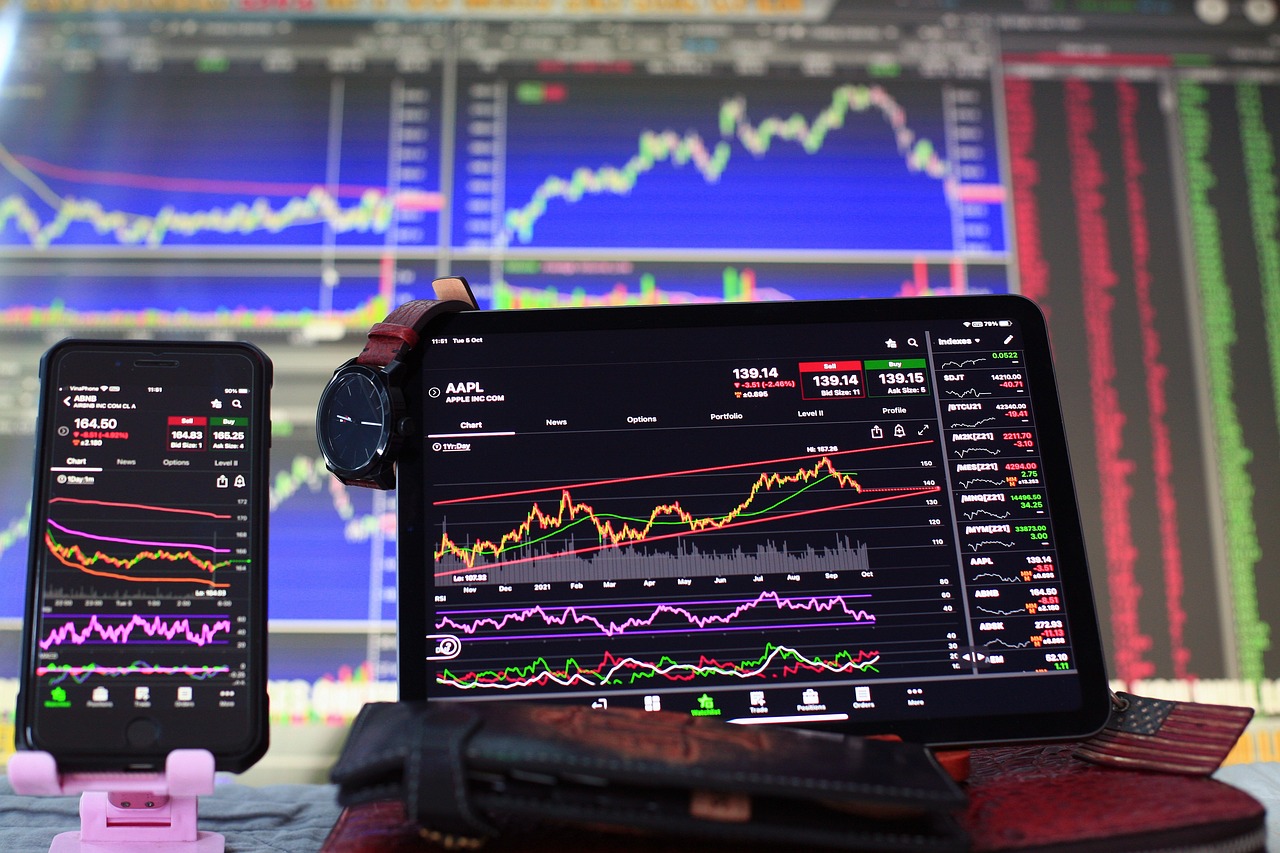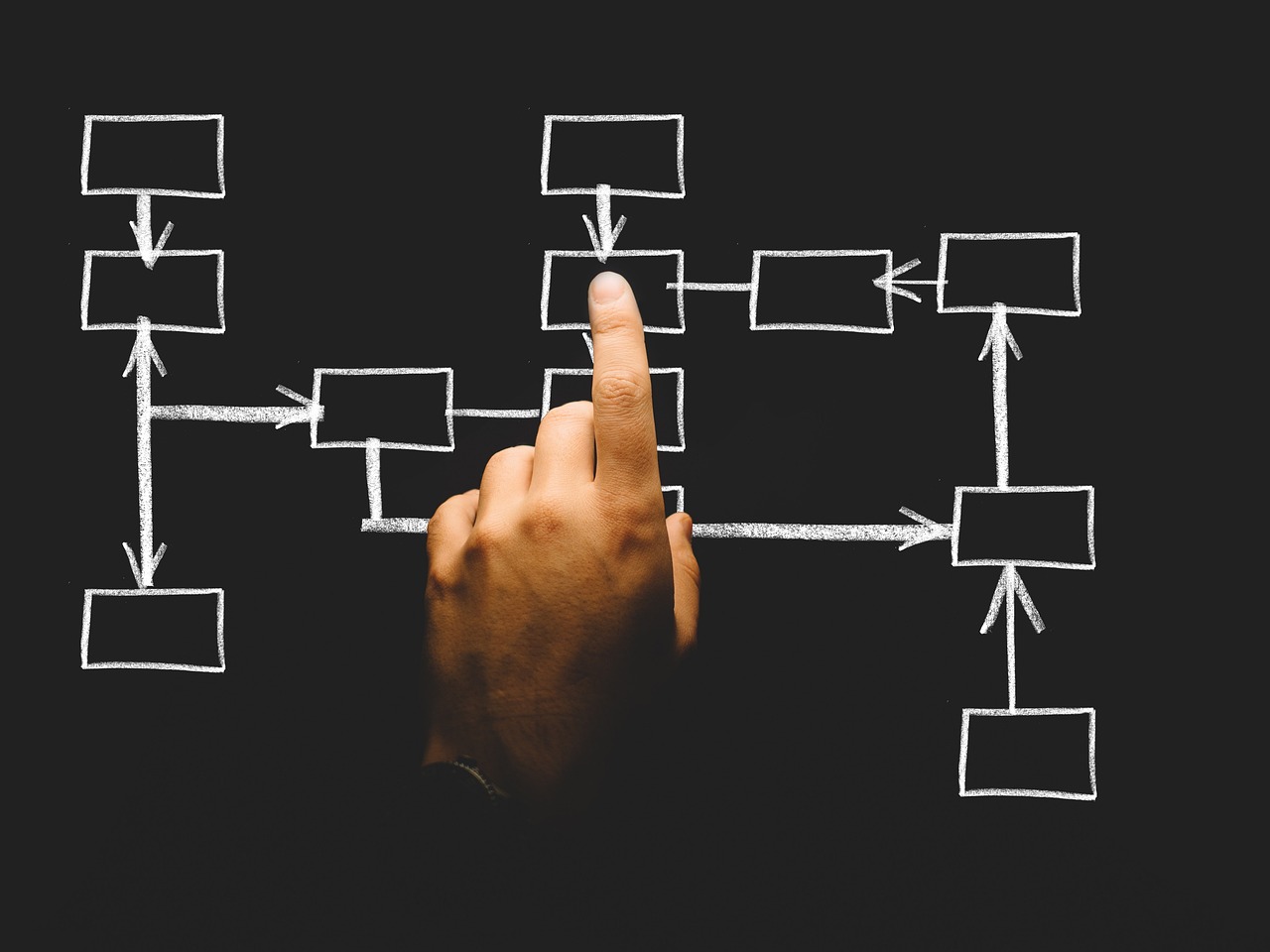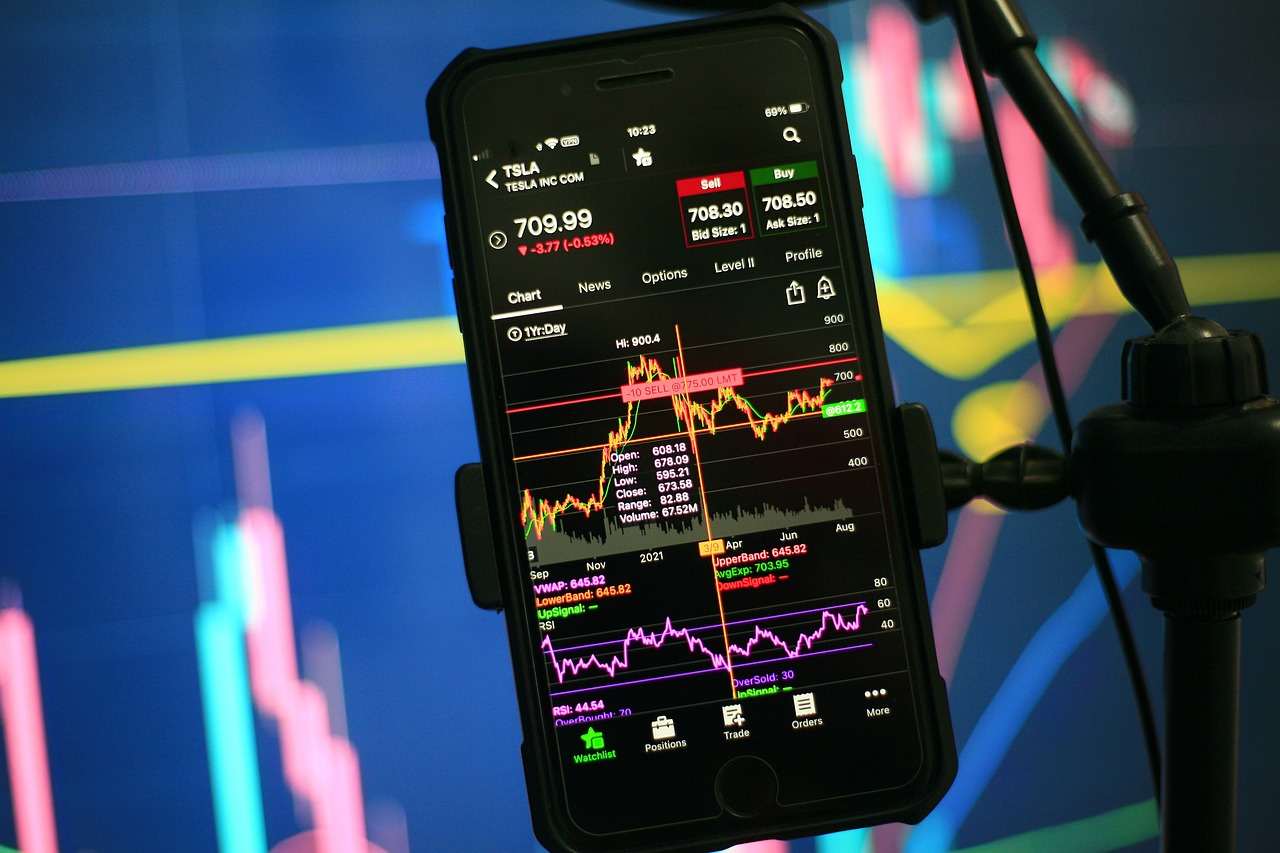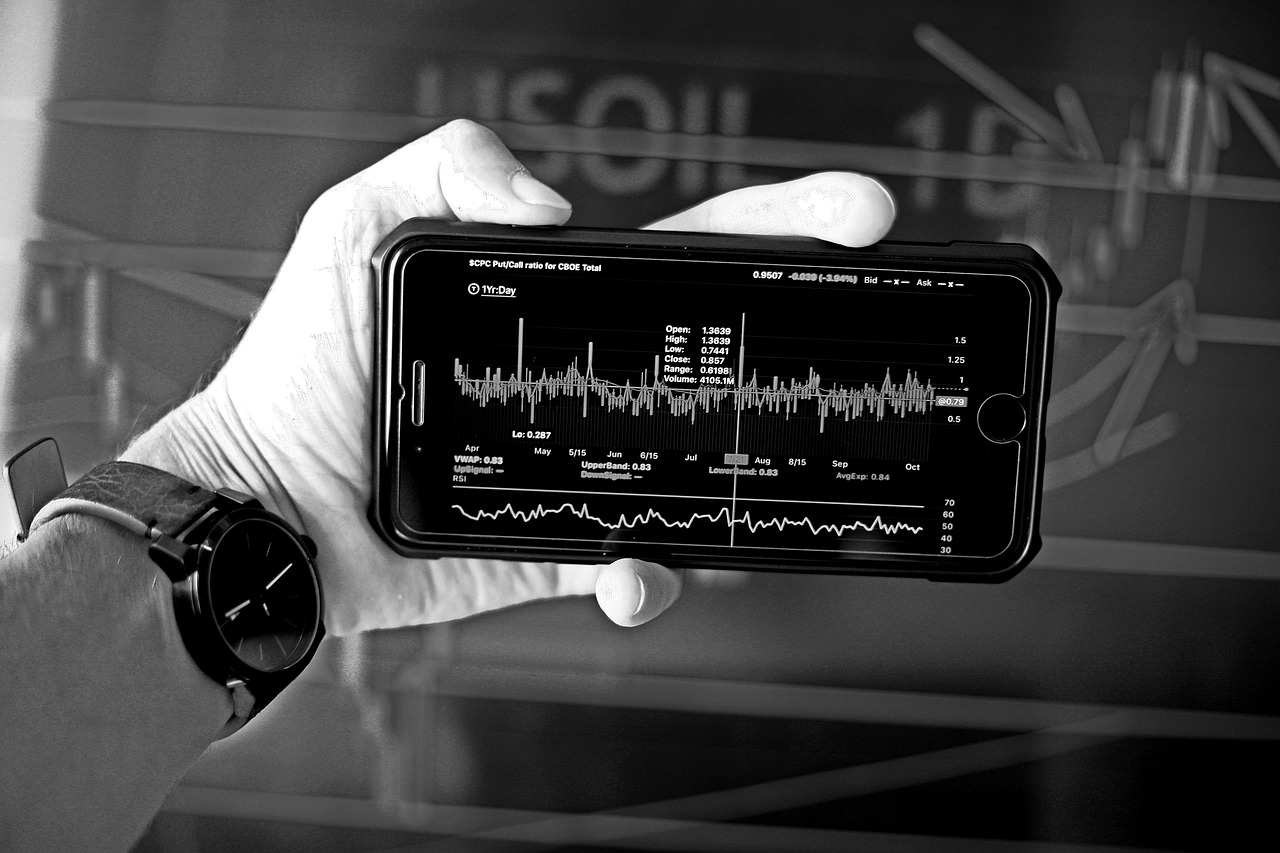How to Use Exchange Features for Advanced Trading
In the ever-evolving world of trading, understanding how to leverage various exchange features is not just a bonus—it's a necessity. Whether you're a novice just dipping your toes in the waters of trading or a seasoned pro looking to sharpen your strategies, knowing how to utilize advanced tools can significantly enhance your trading experience. Imagine having a toolbox filled with specialized instruments that allow you to navigate the market with precision and confidence. That's what advanced trading features offer.
From margin trading to futures, these tools can elevate your game and help you seize opportunities that might otherwise slip through your fingers. Think of it like having a GPS in an unfamiliar city; it guides you toward your destination while avoiding potential pitfalls. In this article, we will explore the various exchange features that can help you maximize your trading efficiency and effectiveness.
Advanced trading features are designed to provide traders with unique tools that can improve their strategies. These features can be likened to advanced maneuvers in a chess game—each move is calculated, with the ultimate goal of outsmarting your opponent. Key features include margin trading, futures, and options. Each of these tools offers traders the ability to position themselves more effectively within the market.
For instance, margin trading allows you to borrow funds to increase your trading position, giving you the potential for larger gains (but also greater risks). Futures contracts enable you to agree on a price for an asset today, with the transaction occurring at a later date, allowing you to hedge against price fluctuations. Options, on the other hand, provide you with the right—but not the obligation—to buy or sell an asset at a predetermined price before a specific date. Understanding how to leverage these features can significantly enhance your market positioning.
When it comes to advanced trading, technical analysis tools are your best friends. These tools are essential for making informed decisions based on market trends and price movements. Think of them as your compass in a vast ocean; they help you navigate through the waves of market volatility. Popular indicators such as moving averages, Relative Strength Index (RSI), and Bollinger Bands can provide valuable insights into market behavior.
Chart patterns are like the fingerprints of market behavior. They provide a visual representation of price movements and can help traders predict future trends. Understanding these patterns is crucial for making informed trading decisions. For example, a head and shoulders pattern often indicates a reversal in trend, while triangles may suggest a continuation of the current trend. Recognizing these patterns can give you a significant edge in your trading strategy.
Some of the most common chart patterns include:
- Head and Shoulders: Indicates a potential reversal in trend.
- Triangles: Suggests a consolidation phase before a breakout.
- Flags: Typically indicate a continuation of the previous trend.
By mastering these patterns, you can better anticipate market movements and position yourself for success.
Volume is another critical aspect of technical analysis. It acts as a confirmation tool for chart patterns. When you see a pattern forming, analyzing the volume can provide clues about the strength of that pattern. For example, if a breakout occurs with high volume, it often indicates strong momentum, whereas a breakout with low volume might suggest a lack of conviction. Understanding how to analyze volume trends alongside chart patterns can enhance your trading decisions and validate potential market movements.
No matter how skilled you are, risk management is crucial for successful trading. It's like wearing a seatbelt in a car; it won't prevent accidents, but it will protect you in case something goes wrong. Traders can implement various strategies to minimize losses and protect their capital while maximizing potential gains. Techniques such as setting stop-loss orders, diversifying your portfolio, and regularly reviewing your trading strategy can help ensure long-term success.
Automated trading systems can streamline your trading processes, allowing you to execute trades based on predefined strategies and market conditions. Think of these systems as your personal trading assistant, working tirelessly to analyze the market and execute trades on your behalf. The benefits of using algorithms and trading bots include increased efficiency and the ability to take advantage of market opportunities without being glued to your screen.
Selecting the appropriate trading algorithm is essential for success. It’s like choosing the right tool for a job; the wrong choice can lead to disastrous results. Factors to consider when choosing algorithms include:
- Market Conditions: Different algorithms perform better in various market environments.
- Trading Styles: Your personal trading style should align with the algorithm's strategy.
- Risk Tolerance: Select algorithms that match your comfort level with risk.
Even automated strategies require oversight. Just because you set it and forget it doesn’t mean you should walk away entirely. Monitoring your algorithms and making necessary adjustments is vital to adapt to changing market conditions. This ensures optimal performance over time and helps you to stay ahead of the curve.
Q: What is margin trading?
A: Margin trading allows you to borrow funds to increase your trading position, which can amplify both gains and losses.
Q: How do I choose the right trading algorithm?
A: Consider factors like market conditions, your trading style, and your risk tolerance when selecting a trading algorithm.
Q: Why is risk management important?
A: Risk management helps minimize losses and protect your capital, ensuring long-term success in trading.

Understanding Advanced Trading Features
In the fast-paced world of trading, having a solid grasp of advanced trading features can make all the difference between a successful trader and one who struggles to keep up. These features are not just bells and whistles; they are powerful tools that can significantly enhance your trading strategy. For instance, consider margin trading, which allows you to borrow funds to increase your position size. This can amplify your profits, but it also comes with increased risk. It’s like using a magnifying glass to focus sunlight; while it can intensify the heat, it can also start a fire if you're not careful.
Another essential feature is futures trading. Futures contracts enable you to agree to buy or sell an asset at a predetermined price at a specific time in the future. This can be particularly useful for hedging against price fluctuations. Think of it as locking in a price for your groceries today, even if you won’t pick them up until next month. This way, you avoid the risk of price hikes. However, just like with margin trading, futures come with their own set of risks that you must understand thoroughly.
Then we have options trading, which adds another layer of complexity and opportunity. Options give you the right, but not the obligation, to buy or sell an asset at a set price before a specific date. This flexibility allows traders to strategize in various market conditions. Imagine having a ticket to a concert that you can sell if you can’t go; options work in a similar way, providing you with the choice to act based on market conditions.
Understanding these features is crucial for effective market positioning. By leveraging margin, futures, and options, traders can create a robust portfolio that can weather market volatility. However, it’s essential to approach these tools with caution and a solid risk management plan. After all, just because you have the tools doesn’t mean you should use them recklessly. Always remember that with great power comes great responsibility.
To put it all into perspective, here's a quick comparison of these advanced trading features:
| Feature | Description | Risk Level |
|---|---|---|
| Margin Trading | Borrowing funds to increase position size. | High |
| Futures Trading | Contracts to buy/sell at a future date. | Medium to High |
| Options Trading | Right to buy/sell without obligation. | Medium |
In conclusion, mastering these advanced trading features can set you apart in the trading arena. They offer unique opportunities to enhance your strategies, but they also require a deep understanding of the associated risks. So, whether you’re a novice eager to learn or a seasoned trader looking to refine your approach, diving into these advanced features will undoubtedly elevate your trading game.

Utilizing Technical Analysis Tools
When it comes to advanced trading, leveraging the right technical analysis tools can be a game changer. These tools not only help in making sense of the chaotic market movements but also empower traders to make informed decisions. Imagine having a compass in the wilderness; that’s what technical analysis tools do for traders navigating the often-turbulent waters of the financial markets. They provide clarity, direction, and a strategic edge.
One of the most popular technical analysis tools is the moving average. This tool smooths out price data to identify trends over a specific period. By analyzing the simple moving average (SMA) or the exponential moving average (EMA), traders can spot potential buy and sell signals. For example, if a short-term EMA crosses above a long-term SMA, it might indicate a bullish trend, prompting traders to consider entering a position. Conversely, a cross below could signal a bearish trend.
Another essential tool in the trader's toolkit is the Relative Strength Index (RSI). This momentum oscillator measures the speed and change of price movements, providing insights into overbought or oversold conditions. An RSI above 70 typically indicates an overbought condition, while an RSI below 30 suggests an oversold condition. By keeping an eye on these levels, traders can make more informed decisions about when to enter or exit trades.
Additionally, traders often utilize chart patterns and candlestick formations as part of their technical analysis. These visual representations of price movements can reveal underlying market sentiment and potential reversal points. For instance, a double top pattern might indicate a bearish reversal, while a bullish engulfing candlestick pattern could signal a potential upward movement. Understanding these patterns is crucial for predicting future price movements and making timely trading decisions.
To illustrate the importance of these tools, consider the following table that summarizes some common technical indicators and their uses:
| Indicator | Type | Purpose |
|---|---|---|
| Moving Average (MA) | Trend Indicator | Identifies the direction of the trend |
| Relative Strength Index (RSI) | Momentum Indicator | Indicates overbought or oversold conditions |
| Bollinger Bands | Volatility Indicator | Measures market volatility and potential price reversals |
| MACD (Moving Average Convergence Divergence) | Trend and Momentum Indicator | Identifies potential buy/sell signals |
Utilizing these technical analysis tools effectively requires practice and experience. Traders should not only rely on one tool but rather combine multiple indicators to confirm their trading decisions. This approach can significantly enhance the accuracy of predictions and increase the likelihood of successful trades.
In summary, mastering technical analysis tools is essential for any trader looking to elevate their trading game. By understanding and applying these tools, traders can gain valuable insights into market trends, make informed decisions, and ultimately improve their trading outcomes. So, are you ready to dive into the world of technical analysis and take your trading strategies to the next level?
- What is technical analysis? Technical analysis is a method used to evaluate and forecast the price movements of assets by analyzing historical price data and market trends.
- How do I choose the right technical indicators? The right indicators depend on your trading style and strategy. It's essential to experiment with different tools and find the combination that works best for you.
- Can technical analysis guarantee profits? While technical analysis can provide insights and improve decision-making, it does not guarantee profits. Markets are unpredictable, and risk management is crucial.

Chart Patterns and Their Significance
Chart patterns are the language of the market. They are like the whispers of a crowd, hinting at what might happen next. Understanding these patterns is crucial for any trader who wants to navigate the volatile waters of financial markets effectively. Just as a seasoned sailor reads the wind and waves, a skilled trader interprets chart patterns to make informed decisions. These patterns are not merely random shapes; they carry significant meaning and can indicate potential price movements.
At their core, chart patterns represent the collective psychology of market participants. They illustrate the struggle between buyers and sellers, showcasing how these forces interact over time. When traders spot a recognizable pattern, they can anticipate future price movements based on historical behavior. For instance, patterns like head and shoulders or double tops often signal reversals, while flags and pennants indicate continuation trends. Recognizing these patterns can be the difference between a successful trade and a costly mistake.
Moreover, the significance of chart patterns extends beyond mere prediction. They can also help traders establish entry and exit points. For example, once a trader identifies a bullish pattern, they can place a buy order at a breakout point, while a bearish pattern might prompt them to set a stop-loss order to limit potential losses. Therefore, understanding these patterns is not just about predicting the future; it’s about strategically positioning oneself in the market.
Here’s a brief overview of some common chart patterns and their implications:
| Chart Pattern | Significance |
|---|---|
| Head and Shoulders | Indicates a reversal from bullish to bearish. |
| Double Top | Signifies a potential price reversal after an uptrend. |
| Flags | Suggests a continuation of the current trend. |
| Pennants | Indicates a brief pause before the previous trend resumes. |
In conclusion, mastering chart patterns is essential for traders who aspire to elevate their trading game. By recognizing these patterns and understanding their significance, traders can make more informed decisions, ultimately leading to improved trading outcomes. So, the next time you glance at a price chart, remember: it’s not just numbers and lines; it’s a story waiting to be decoded.
- What are chart patterns? Chart patterns are formations created by the price movements of an asset on a chart, indicating potential future price movements.
- How many types of chart patterns are there? There are many types, but some of the most common include head and shoulders, double tops, flags, and pennants.
- Can chart patterns guarantee profits? No, while they can provide insights, they do not guarantee profits. Traders should use them in conjunction with other analysis techniques.
- How can I improve my ability to recognize chart patterns? Practice is key. Regularly analyzing charts and studying historical patterns can enhance your recognition skills.

Common Chart Patterns
Understanding is essential for any trader looking to gain an edge in the market. These patterns serve as visual cues that can indicate potential future price movements, making them invaluable in technical analysis. By recognizing these formations, traders can make informed decisions that align with market sentiment. Some of the most prevalent chart patterns include the head and shoulders, triangles, and flags.
The head and shoulders pattern is often seen as a reliable indicator of a reversal in trend. It consists of three peaks: the first peak (left shoulder), a higher peak (head), and a second lower peak (right shoulder). When this pattern forms, it typically signals that the price may soon decline, giving traders a chance to sell before the downturn.
On the other hand, triangles can indicate continuation or reversal depending on their type—ascending, descending, or symmetrical. These patterns form when the price action converges into a tighter range, creating a triangle shape on the chart. Traders often look for breakout points, where the price moves beyond the triangle's boundaries, signaling a potential trade opportunity.
Lastly, flags are short-term continuation patterns that resemble a rectangle or a parallelogram. They typically form after a strong price movement and indicate a brief consolidation period before the trend resumes. Recognizing flags can help traders enter positions in the direction of the prevailing trend, maximizing their profit potential.
To effectively utilize these patterns, traders should also consider volume analysis. For instance, a breakout from a head and shoulders pattern accompanied by high volume can strengthen the signal, while a breakout with low volume may warrant caution. Understanding the interplay between chart patterns and volume can significantly enhance trading decisions.
In conclusion, mastering common chart patterns is a pivotal step for traders aiming to navigate the complexities of the market. By identifying these patterns and understanding their implications, traders can position themselves to capitalize on potential price movements effectively.
- What is the significance of chart patterns in trading? Chart patterns help traders predict future price movements based on historical data, allowing for better decision-making.
- How can I effectively use volume with chart patterns? Analyzing volume trends alongside chart patterns can confirm the strength of a breakout or reversal, enhancing trading strategies.
- Are chart patterns reliable indicators? While chart patterns can provide valuable insights, they are not foolproof. Traders should use them in conjunction with other analysis techniques.

Using Volume to Confirm Patterns
When it comes to trading, one of the most overlooked yet powerful aspects is volume. Volume refers to the number of shares or contracts traded in a security or market during a given period. Understanding how to use volume can significantly enhance your ability to confirm chart patterns and make informed trading decisions. Think of volume as the fuel that drives the market; without it, price movements can be misleading and lack conviction.
So, why is volume so important in confirming chart patterns? Well, when you see a price pattern forming—like a head and shoulders or a triangle—it's essential to ensure that there’s adequate volume supporting the move. For instance, if a bullish breakout occurs but the volume is low, it might indicate a lack of interest in the move, making it potentially unreliable. On the contrary, a breakout accompanied by high volume suggests strong conviction and can signal a higher probability of the trend continuing.
To illustrate this point, let's consider a simple table that outlines the relationship between volume and price movements:
| Price Movement | Volume Level | Interpretation |
|---|---|---|
| Breakout Up | High | Strong bullish signal; likely to continue rising |
| Breakout Up | Low | Weak signal; potential for reversal |
| Breakdown Down | High | Strong bearish signal; likely to continue falling |
| Breakdown Down | Low | Weak signal; potential for reversal |
As you can see from the table, volume acts as a confirmation tool. When analyzing a pattern, always ask yourself: Is the volume supporting this move? If you notice a price pattern forming alongside increasing volume, that's your cue that the market participants are backing the price movement, adding credibility to your analysis.
Moreover, volume can also help identify potential reversals. For example, if a stock has been in a downtrend and suddenly shows a spike in volume while forming a bullish reversal pattern, this combination can signal that buyers are stepping in, and a reversal might be on the horizon. Conversely, if you see heavy selling volume during a bullish pattern, it might be a sign that the momentum is fading, and you should be cautious.
In summary, using volume to confirm patterns is not just a nice-to-have skill; it's a critical component of advanced trading strategies. By paying attention to volume, you can better gauge the strength of price movements and make more informed decisions, ultimately enhancing your trading success.

Implementing Risk Management Strategies
When it comes to trading, the thrill of potential profits can sometimes overshadow the fundamental need for risk management. Imagine you're on a roller coaster; the exhilarating highs can be addictive, but without the safety harness, you might find yourself in a free fall! In trading, those harnesses are your risk management strategies. They help ensure that while you aim for the stars, you don't crash back down to earth unexpectedly.
One of the most effective ways to manage risk is through the use of stop-loss orders. These handy tools allow you to set a predetermined price at which your trade will automatically close, limiting your losses. For instance, if you buy a stock at $100 and set a stop-loss at $90, your trade will close if the stock price drops to that level, protecting you from further declines. This method is akin to having a safety net; it gives you peace of mind as you navigate the unpredictable market.
Another essential strategy involves diversifying your portfolio. Just like you wouldn’t put all your eggs in one basket, spreading your investments across different assets can significantly reduce risk. For example, consider a mix of stocks, bonds, and commodities. By doing so, you can cushion the blow if one sector underperforms, as the others may still yield positive returns. Here’s a simple table to illustrate how diversification can work:
| Asset Class | Percentage of Portfolio | Potential Risk |
|---|---|---|
| Stocks | 50% | High |
| Bonds | 30% | Low |
| Commodities | 20% | Medium |
This balanced approach not only helps mitigate risk but also positions you for more stable returns over time. However, it's crucial to regularly review and adjust your portfolio based on market conditions and personal financial goals. Think of it as tending to a garden; you need to prune and replant to ensure everything flourishes.
Moreover, understanding your risk tolerance is vital. This is the degree of variability in investment returns that you are willing to withstand. Everyone has a different threshold; some may be comfortable with high volatility, while others prefer a more stable approach. Take the time to assess your financial situation, investment goals, and emotional response to risk. This self-awareness can guide your trading decisions and help you avoid panic selling during market downturns.
Lastly, never underestimate the power of education. The more you know, the better equipped you are to make informed decisions. Consider attending workshops, reading trading books, or following market analysts. Knowledge is your best ally in the quest for effective risk management. Remember, even seasoned traders continuously learn and adapt their strategies. It's a journey, not a destination!
- What is a stop-loss order? A stop-loss order is an instruction to sell a security when it reaches a certain price, helping to limit potential losses.
- How can I determine my risk tolerance? Assess your financial situation, investment goals, and emotional response to market fluctuations to gauge your risk tolerance.
- Why is diversification important? Diversification reduces risk by spreading investments across various asset classes, which can cushion against losses in any single area.
- How often should I review my portfolio? Regular reviews are important—consider doing so quarterly or whenever significant market changes occur.

Leveraging Automated Trading Systems
In today's fast-paced trading environment, automated trading systems have become a game-changer for traders looking to enhance their efficiency and effectiveness. These systems, often powered by sophisticated algorithms, allow traders to execute trades automatically based on predefined criteria. Imagine having a tireless assistant that can analyze market data, identify trading opportunities, and execute trades in the blink of an eye—this is precisely what automated trading systems offer!
One of the most significant advantages of using automated trading systems is the ability to remove emotional biases from trading decisions. Emotions like fear and greed can cloud judgment and lead to poor decision-making. By relying on algorithms, traders can stick to their strategies and avoid the pitfalls of emotional trading. It's like having a GPS for your trading journey, guiding you through the twists and turns of the market without letting emotions take the wheel.
Moreover, automated trading systems can operate 24/7, allowing traders to capitalize on market movements even when they are not actively monitoring their screens. This is particularly beneficial in the world of cryptocurrency, where markets never sleep. Just think about it: while you’re catching some much-needed sleep, your automated system could be executing profitable trades on your behalf!
However, not all automated trading systems are created equal. When choosing the right system, there are several factors to consider:
- Market Conditions: Different algorithms perform better in varying market conditions. Some may excel in trending markets, while others are designed for ranging markets.
- Trading Styles: Consider whether the system aligns with your trading style—whether you're a day trader, swing trader, or long-term investor.
- Risk Tolerance: Your risk appetite should dictate the type of algorithm you choose. Some systems are more aggressive, while others are conservative.
Once you've selected an automated trading system, it’s essential to monitor its performance continually. Just because a system is automated doesn't mean it doesn't require oversight. Market conditions can change rapidly, and algorithms may need adjustments to adapt. Regularly reviewing performance metrics and making necessary tweaks can ensure that your trading strategy remains robust and responsive.
To illustrate the importance of monitoring and adjustments, consider the following table that outlines key performance indicators (KPIs) to track:
| Performance Indicator | Description |
|---|---|
| Win Rate | The percentage of trades that are profitable. |
| Average Return | The average profit or loss per trade. |
| Maximum Drawdown | The largest peak-to-trough decline in the account balance. |
| Sharpe Ratio | A measure of risk-adjusted return. |
In summary, leveraging automated trading systems can significantly enhance your trading strategy by improving efficiency, reducing emotional biases, and allowing for continuous market engagement. However, it's crucial to choose the right algorithm and maintain an active role in monitoring its performance. After all, while automation can do the heavy lifting, your insight and adjustments will ultimately steer your trading success.
- What are automated trading systems? Automated trading systems are software programs that execute trades automatically based on predetermined criteria, helping traders make decisions without emotional interference.
- Can I customize my automated trading system? Yes, many systems allow users to customize their algorithms based on personal trading strategies and risk tolerance.
- Do I need to monitor my automated trading system? Absolutely! While these systems can operate independently, regular monitoring is essential to adapt to changing market conditions.
- What should I look for in a trading algorithm? Consider factors such as market conditions, your trading style, and your risk tolerance when selecting an algorithm.

Choosing the Right Trading Algorithm
When it comes to advanced trading, selecting the right trading algorithm can feel like navigating a maze without a map. With the ever-evolving market landscape, having a reliable algorithm that aligns with your trading style is crucial. So, how do you choose the perfect one? Well, let’s break it down!
The first step is to consider your trading strategy. Are you a day trader who thrives on quick, high-frequency trades, or do you prefer a more laid-back approach, like swing trading? Different algorithms cater to different styles. For instance, high-frequency trading algorithms are designed to capitalize on small price discrepancies over very short periods, while swing trading algorithms focus on capturing price movements over several days or weeks.
Next, think about your risk tolerance. This is where things get personal. Are you comfortable with taking significant risks for potentially high rewards, or do you prefer a more conservative approach? Algorithms can be tailored to fit various risk profiles. For example, if you have a low-risk tolerance, you might want to choose an algorithm that employs strict stop-loss orders and conservative entry points.
Another critical factor is the market conditions. Different algorithms perform better in different environments. For example, a trending market might favor momentum-based algorithms, while a sideways market could benefit from mean-reversion strategies. To ensure you’re making an informed choice, consider backtesting algorithms against historical data to see how they would have performed under various market conditions.
Moreover, it’s essential to evaluate the algorithm’s execution speed and reliability. In the fast-paced world of trading, milliseconds can make a difference. A delay in execution can turn a winning trade into a losing one. Therefore, choose an algorithm that is known for its speed and reliability. You might also want to look into the infrastructure of the trading platform you’re using, as this can impact execution times.
Lastly, don’t forget about the support and community around the algorithm. A strong community can provide invaluable insights, tips, and troubleshooting help. Whether it’s through forums, social media groups, or dedicated support from the algorithm’s developers, having access to a supportive network can enhance your trading experience. Plus, it can help you stay updated on any changes or improvements to the algorithm.
In summary, choosing the right trading algorithm involves a mix of understanding your trading style, assessing your risk tolerance, considering market conditions, ensuring execution speed, and tapping into community support. It’s a process, but with the right approach, you can find an algorithm that not only meets your needs but also enhances your trading success. Remember, the right tool in your trading toolbox can make all the difference!
- What is a trading algorithm? A trading algorithm is a set of rules or instructions programmed into a system that executes trades based on specific criteria.
- How do I know if an algorithm is right for me? Assess your trading style, risk tolerance, and market conditions to determine which algorithm aligns best with your goals.
- Can I modify a trading algorithm? Many algorithms allow for customization, enabling traders to adjust parameters to better fit their strategies.
- Is backtesting important? Absolutely! Backtesting helps you understand how an algorithm would have performed in the past, giving you insights into its potential effectiveness.

Monitoring and Adjusting Automated Strategies
In the fast-paced world of trading, relying solely on automated strategies can sometimes feel like sailing a ship without a captain. While algorithms and trading bots are designed to execute trades based on predefined criteria, it’s essential for traders to maintain a vigilant eye on their performance. After all, the market is a living entity, constantly changing and evolving, and what worked yesterday may not work today. So, how can you effectively monitor and adjust your automated strategies to ensure they remain profitable?
First and foremost, setting up a robust monitoring system is crucial. This involves regularly checking the performance metrics of your trading algorithm. Key performance indicators (KPIs) such as win rate, return on investment (ROI), and drawdown should be at the forefront of your analysis. By keeping track of these metrics, you can identify trends and make informed decisions about necessary adjustments. For instance, if you notice a significant drop in your win rate, it might be time to reassess your strategy.
Moreover, it’s important to adapt your automated strategies to current market conditions. Markets can be influenced by a myriad of factors, including economic reports, geopolitical events, and even social media trends. To illustrate this point, consider the following table that outlines how different market conditions can impact trading strategies:
| Market Condition | Impact on Strategies | Adjustment Suggestions |
|---|---|---|
| High Volatility | Increased risk and potential for larger gains | Implement tighter stop-loss orders |
| Low Volatility | Reduced price movements, potential for stagnation | Consider switching to a range trading strategy |
| Trending Market | Opportunity for momentum trading | Adjust algorithms to capitalize on trends |
| Sideways Market | Challenging for trend-following strategies | Utilize mean-reversion strategies |
By understanding how various market conditions affect your trading strategies, you can proactively make adjustments to your algorithms. This adaptability is key to maintaining an edge in the market. Additionally, incorporating machine learning techniques can enhance your algorithms' ability to learn from past trades and improve their decision-making processes over time. Think of it as a personal trainer for your trading strategy—constantly refining and optimizing to achieve peak performance.
Lastly, don’t underestimate the value of human intuition. Even with advanced algorithms at your disposal, your experience and insights as a trader can provide invaluable context. Regularly review the trades executed by your automated strategies and ask yourself: Are they aligning with my overall trading philosophy? If not, it may be time to tweak the parameters or even consider a complete overhaul of your approach. Remember, the goal is not just to automate but to enhance your trading experience.
In conclusion, monitoring and adjusting your automated trading strategies is not a set-it-and-forget-it affair. It requires ongoing attention, analysis, and a willingness to adapt. By keeping a close eye on performance metrics, understanding market conditions, and blending technology with personal insight, you can ensure that your automated strategies continue to work in your favor. So, grab the helm and steer your trading ship with confidence!
- What are automated trading strategies? Automated trading strategies use algorithms to execute trades based on predefined criteria without human intervention.
- How often should I monitor my automated strategies? It is advisable to monitor your strategies regularly, at least daily or weekly, depending on your trading frequency.
- Can I make adjustments to my automated trading strategies? Yes, adjustments can be made based on performance metrics and changing market conditions.
- What are key performance indicators for automated trading? Key performance indicators include win rate, ROI, and drawdown.
- Is human oversight necessary for automated trading? Yes, human oversight is essential to ensure that strategies align with market conditions and personal trading philosophies.
Frequently Asked Questions
- What are advanced trading features?
Advanced trading features are specialized tools and functionalities offered by trading platforms that help traders enhance their strategies. These may include margin trading, futures, options, and various technical analysis tools that allow for more sophisticated market positioning.
- How can I utilize technical analysis tools effectively?
To effectively utilize technical analysis tools, familiarize yourself with popular indicators like moving averages, RSI, and MACD. Combine these tools with chart patterns to identify trends and make informed trading decisions based on market movements.
- What are some common chart patterns I should know?
Some common chart patterns include head and shoulders, triangles, and flags. Recognizing these patterns can provide insights into potential price movements, helping you to anticipate market behavior and make timely trades.
- Why is volume important in trading?
Volume is crucial as it confirms the strength of a price movement. Analyzing volume trends alongside chart patterns can help validate potential market movements, making your trading decisions more reliable.
- What risk management strategies should I implement?
Effective risk management strategies include setting stop-loss orders, diversifying your portfolio, and only risking a small percentage of your capital on any single trade. These strategies help minimize losses and protect your capital while maximizing potential gains.
- How do automated trading systems work?
Automated trading systems use algorithms to execute trades based on predefined strategies and market conditions. They can analyze vast amounts of data quickly, allowing for faster decision-making and execution compared to manual trading.
- What factors should I consider when choosing a trading algorithm?
When choosing a trading algorithm, consider factors such as market conditions, your trading style, and your risk tolerance. Selecting the right algorithm can significantly impact your trading success and help you achieve your financial goals.
- Do I need to monitor my automated trading strategies?
Yes, even automated strategies require monitoring. Regularly reviewing and adjusting your algorithms ensures they remain effective in changing market conditions, helping to maintain optimal performance over time.



















